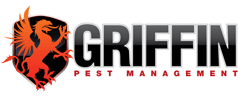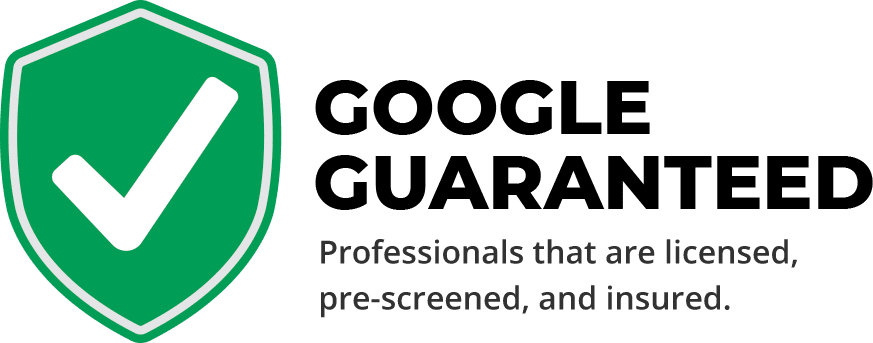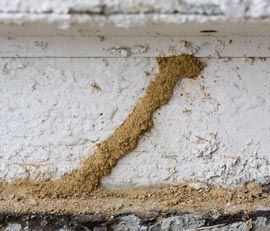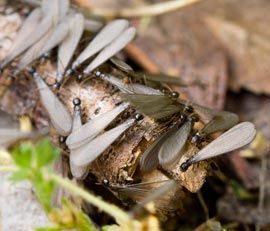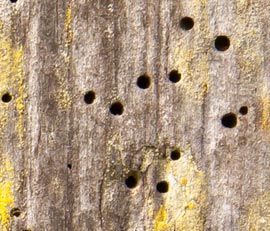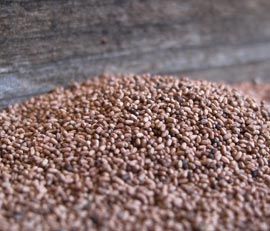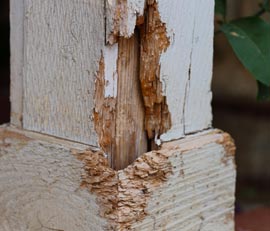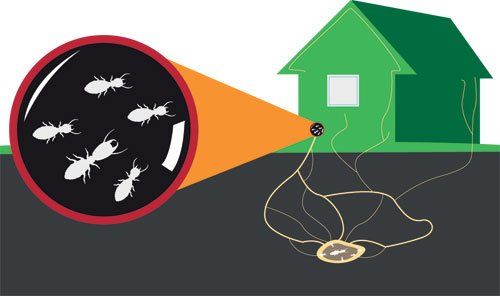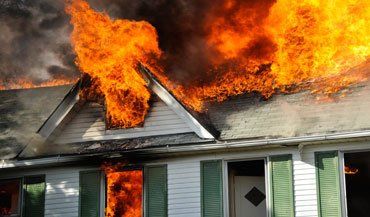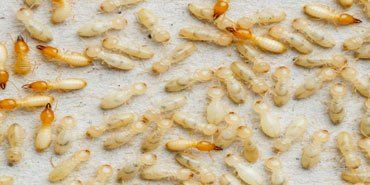Subterranean Termite Pest Control
What Are Subterranean Termites?
How Do I Know I Have Subterranean Termites?
Immediate Termite Control
Termite Signs
Mud Tubes
Subterranean termites enter homes through mud tubes that run up from the foundation.
Swarmers
Winged reproductive termites appear after periods of heavy rain or in late summer / early fall.
Kick Out Holes
As termites tunnel through wood, they use kick out holes to discard fecal pellets and frass.
Discarded Wings
After reproductive termites mate, they shed their wings typically around doors, windows or attic spaces.
How Do Subterranean Termites Infest A Structure?
Subterranean termites nest in moist, underground areas, in what is known as a crown colony. Crown colonies act as a central hub that Subterranean termites use to infest structures from a distance. As they spread out, Subterranean termites will also set up satellite colonies in the space between infested structures and the primary crown colony. Protective mud tubes are the primary source of above ground transportation between the colony and the infested timber. It is common to find evidence of subterranean termites in basements, baseboards or any wood framing buried in soil.
Subterranean termites threaten the foundation of a structure by undermining the soil and buried wood. Untreated infestations can cost thousands of dollars in damage and almost always require extensive repairs to be made to the concrete slab or foundation of the structure. Subterranean termites will also enter a home through cracks in the cement slab or joints of the structure. After entering the home, Subterranean termites typically end up in suitably moist locations such as bathrooms or showers.
Subterranean Termite Wood Damage
Subterranean Termite Treatment Options
Griffin Pest Management offers a variety of treatment methods for subterranean termites. Our professional technicians will recommend either soil treatments (trench & treat), local treatment (drill & treat), fumigation or a combination of these treatments depending on the severity of your subterranean termite infestation. Our technician will start with a thorough inspection of the property to assess the scope of the infestation. Once determined, the technician will recommend a treatment plan that will best fit your needs and budget. All of our services are guaranteed to keep your home termite-free.
Fumigation
If Subterranean termites are found throughout the structure, fumigation may be required. In situations where Subterranean termites are inaccessible to secondary treatment methods, tenting your home or office is a guaranteed way to eliminate them. After our technicians have performed a full inspection of your home, we may recommend fumigation to eradicate your termite problem.
Local Treatment
Trenching, rodding and treating is the most common method of Subterranean termite extermination. This chemical barrier prevents termites from accessing your home through the soil. Drilling and treating the soil is a great way to put a defensive barrier between the slab of your home and Subterranean termites.
Why We Don't use Orange Oil
Flammable When Applied
Orange oil is a contact based termiticide, meaning it has to saturate the wood to effectively control termites. Wood saturated with orange oil is highly flammable. Orange oil should not be used near electrical sources, heating and cooling units, or in any other situation that may routinely reach over 120 degrees - such as a wall void or attic. Southern Californian homes are no stranger wildfires. Orange oil may make your home harder to protect during fire season.
Much Less Effective
Orange oil treatments are only successful when applied directly to termite colonies, for a short period of time. Orange oil as a pre-treatment doesn't work because there is no effect on termites just 4 weeks after treatment. Orange oil treatments are limited to accessible areas and regularly miss hidden areas of termite activity.
Termite keep Feeding
Orange oil requires long duration of contact to kill drywood termites. Wood treated with orange oil prevents feeding, encouraging termites to feed on un-treated, difficult to access areas. Termites that do not die from orange oil treatment will require additional treatments for control.
Only A Secondary Treatment
The state of California does not recognize orange oil as a primary drywood termite control solution. Orange oil treatments are limited to accessible areas, which allows untreated termites to continue feeding. There are only two approved whole structure treatment methods for the eradication of termites: fumigation and heat.
Termite Protection Plans
Two Plans To Serve You
Eliminating termites through fumigation or local treatment is only the first step to protecting your home from termites. Griffin Pest Management offers termite protection plans which defend against future infestations of termites.
What's Included?
- Liquid perimeter treatment
- An annual inspection
- No deductible for termite damage repair
- Contract is transferable
- Optional termite bait stations
- Annual renewal with no limitations
- Exterior treatment four times per year to keep pests from entering your home
While both our Pro Shield and Pro Sheild Plus programs provide unmatched protection against termites and include the same warranty, we recommend the Pro Sheild Plus program which includes treatments to provide several layers of protection against termites and other household pests. For more information about our Pro-Shield programs, call us today.
Pro-Shield Program
Our Pro-Shield program is a one-year termite protection program that includes treatment and repairs, including reframing. Our Pro-Shield program starts at $385.
+ Pro-Shield Plus
The smart way to save! This package combines our termite protection program and general pest services to offer you the best pest protection available.
